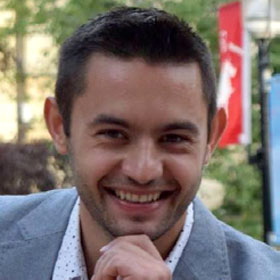The RECORDER would like to introduce a new feature in the Tracing the Industry column. An integral part of the geophysical and geoscience industry is the universities. We will be publishing graduate student profiles from universities in Canada and abroad. This is an opportunity for both universities and graduate students to showcase their research. The RECORDER is read by over 2000 members of the CSEG every month with members in 16 countries. So this is an excellent way to make the geophysical community aware of the new research being undertaken. It is also a way for the graduate students to introduce themselves and their area of specialization to the geophysical community. This could also lead to future employment opportunities.
The RECORDER committee will be contacting universities and inviting them to submit graduate student profiles. But please don’t wait until someone contacts you. We may miss someone. So be proactive and send your profile to me at the email address below.
If you have a new job, have been promoted, retired, or want to share your contact information, you can contact me at carmen.swalwell@shaw.ca or 403-560-8431.
Graduate Student Profile
Stepan Lavrinenko

I was born on the coast of the Black sea, and emigrated to Canada 13 years ago. Seeing the cutting-edge technology that the exploration industry creates and how it advances all related disciplines, I decided to pursue a B.Sc. (Specialization in Geophysics) at the University of Alberta. During this time I was a research assistant for one of Dr. van Der Baan’s PhD students. That’s when I was introduced to the field of microseismic waveform identification and analysis.
Microseismic is a very new field that continues to set problems that demand creative solutions. I enjoyed looking for those, as well as continuously learning on the way. I developed my own technique of semi-automatic waveform picking, after carefully researching signal analysis papers available at the time, and encoded the whole process from scratch. Writing a lot of code does give an appreciation for the time spent on the elegance and the efficiency of the techniques of waveform automatic identification that are being currently developed.
Subsequently, I worked as a microseismic processor in a smaller service company. This was not a usual office position as would be expected in a bigger corporation it was full of opportunities to combine inter-disciplinary information (pump data, geology, logs, seismic, microseismic and VSPs) to come up with more reliable and effective solutions to a multitude of microseismic problems (feasibility studies, velocity analyses, fracture networks and geobody volume, etc.). Doing real-time processing in the field, where quick problem-solving is essential solidified my aspirations for working towards a more multifaceted education.
That is where I first realized the need to be able to speak the languages of the people a geophysicist commonly rubs elbows with- geologists, engineers, government officials and the rest of O&G exploration professionals. I joined the Integrated Petroleum Geosciences MSc program at University of Alberta because it was designed with this goal in mind by a group of industry professionals. The degree offers real-world experiences that are most needed in the preparation for a successful career – courses that focus on practical applications, an industry-quality research project, field trips and seminars that expose the current issues, trends and opportunities that the industry faces.
Stepan Lavrinenko
slavrine@ualberta.ca
ca.linkedin.com/in/stepanl











Share This Column